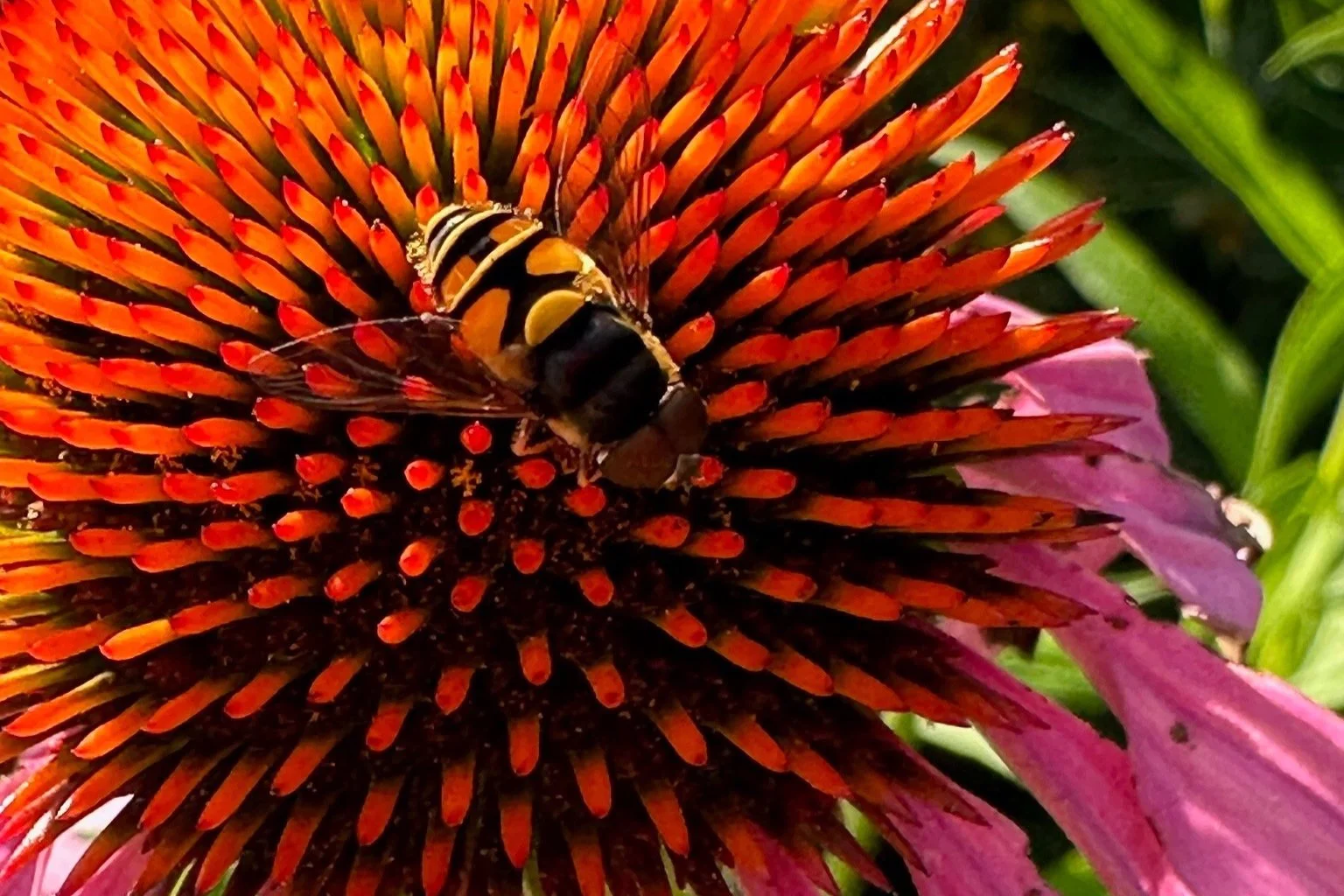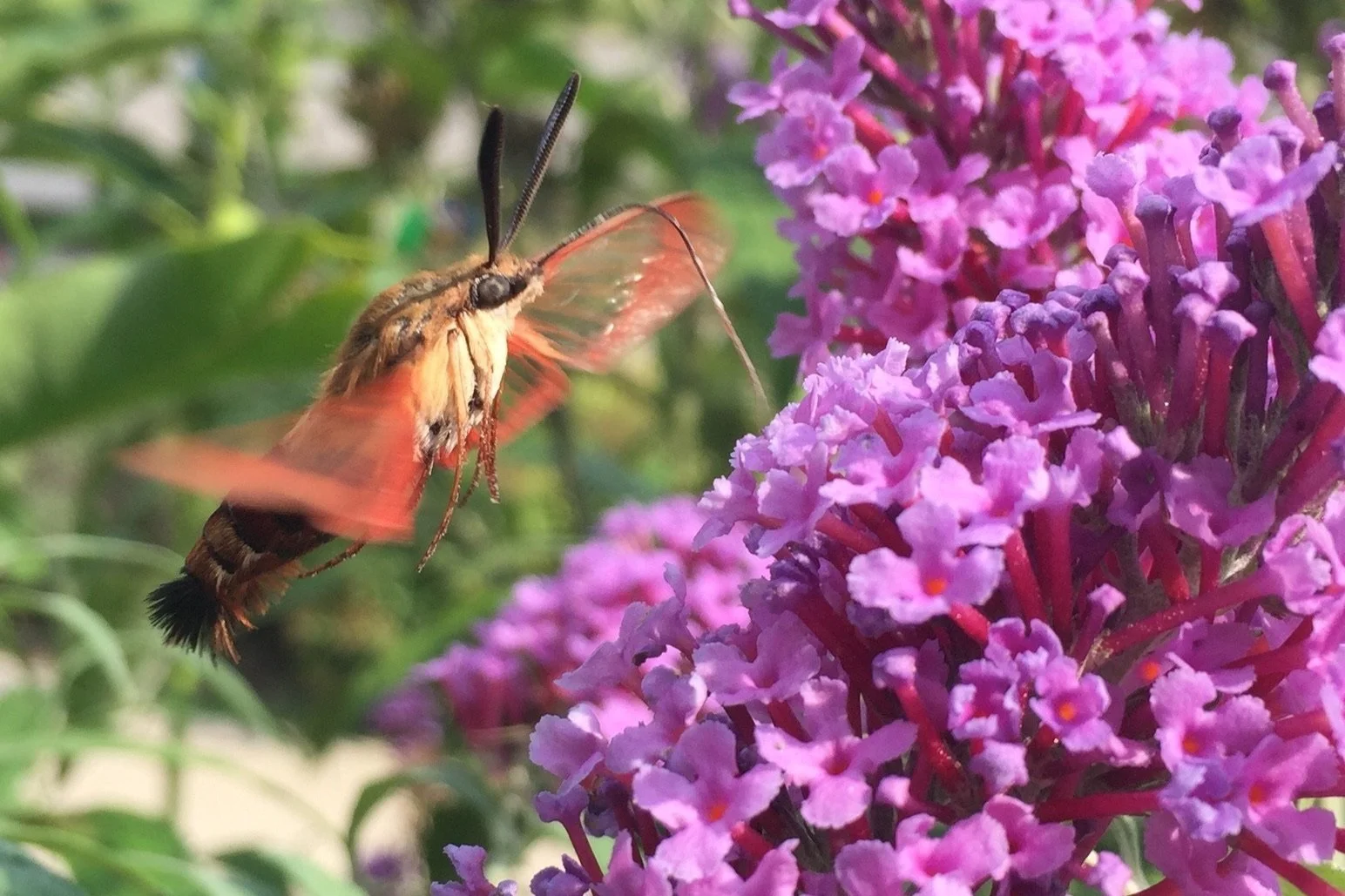Who Are These Pollinators?
Have you ever wondered which species are responsible for pollinating your fruits and vegetables? Allow us to introduce you to some of the key pollinators. While you might not encounter all of them in your backyard, depending on your geographic location, you'll be amazed by the diversity of pollinators you may not have considered before.
Bees
Bees are well-known pollinators, but did you know that there are around 4,000 species of native bees in North America? These range from the tiny Perdita minima, the world's smallest bee, to larger species like carpenter bees.
Europe is home to approximately 1,965 species of bees. This diverse group includes both solitary and social bees, each playing a vital role in pollination across various ecosystems.
An interesting fact about bees is that they can see ultraviolet light, which is invisible to humans. Many flowers have UV patterns that guide bees to their nectar. Bees can see various shades of blue and perceive green differently than humans. However, they cannot see red, which appears as black or very dark to them. This explains why bees are less attracted to red flowers. If you're curious about which pollinates your Cardinal Flower or Scarlet Bee Balm, look for hummingbirds!
Butterflies
Butterflies are some of the most beautiful pollinators in the world. Gardeners are delighted when they see butterflies visiting their flowers, but did you know that it's not enough to just plant pretty flowers? You need to provide host plants too! People often ask us why our gardens attract so many butterflies while their flower-filled gardens see few visitors. The secret is that you must offer host plants for butterflies to lay their eggs on and for caterpillars to feed. Without these, butterflies won't stay in your garden.
Flies
Though it's hard to pinpoint the exact number of fly species that pollinate vegetable gardens in North America, we do know that flower flies (Syrphidae) are important pollinators. There are almost 900 species of flower flies in North America. These flies, also called hover-flies, visit flowers to feed on nectar and pollen, and in the process, they accidentally transfer pollen from one flower to another. Europe is home to almost 1,000 species of hover-flies, so look out for these.
Moths
Moths are important pollinators for many plants, though they don’t often pollinate fruits and vegetables. Studies have found 227 instances of moths pollinating flowers in North America, mainly from Noctuidae and Sphingidae families. Moths play a crucial role in pollinating many plants, especially native wild plants, helping to maintain ecosystem diversity. While they are not key pollinators for crops, they are important for ecosystem health, serving as food sources for birds, bats, and other insects.
Birds
Some birds in North America help with pollination for example the hummingbird, but they aren’t the main pollinators for most fruits and vegetables. Hummingbirds are particularly known for pollinating tubular-shaped flowers. While they do sometimes pollinate fruit-bearing plants, they more commonly pollinate wildflowers and ornamental plants. We often see hummingbirds pollinating our Scarlet Runner Beans throughout the season as their red flowers are especially attractive to them, unlike most bees! In Europe, birds also aid in pollination, but again, they aren't the primary pollinators for most fruits and vegetables. Bird pollination is more frequent in the Mediterranean region due to many migrant bird species. However, the overall ecological significance of bird pollination in Europe is still not fully understood and requires further research.
Bats
Globally, bats are crucial pollinators in tropical and subtropical regions. They pollinate numerous fruit-bearing plants, such as bananas, mangoes, and guavas. Their nocturnal activities help with pollination when other pollinators are inactive. So, why is it important to have bats in your garden? Bats are natural pest controllers. They consume large quantities of insects, including mosquitoes, moths, and agricultural pests. This reduces the need for chemical pesticides, promotes a healthier environment, and supports farmers & gardeners. In tropical and subtropical regions, bats also play a vital role in seed dispersal. They consume fruits and disperse seeds over wide areas, aiding in plant propagation and forest regeneration. For example, fig trees and other fruit-bearing plants rely on bats for seed dispersal.
Beetles
Yes, beetles do pollinate flowers! They are actually some of the earliest pollinators, even before bees and butterflies came onto the scene. Beetles are especially drawn to flowers that have strong scents and produce a lot of pollen so there is enough for food as well as pollination. Their robust bodies can pick up and transfer pollen as they move from flower to flower. They are attracted to flowers that are white or green and either have a very strong scent or none at all. Beetles usually pollinate flowers with large openings where there is plenty of room to land. Some plants even rely mainly on beetles for pollination, such as magnolias, water lilies, and pawpaws.
Wasps
Wasps might not be the first insects that come to mind when you think of pollinators, but they play a significant role in supporting healthy ecosystems. Many wasps contribute to pollination while searching for nectar, similar to bees. But unlike bees, which have specialized body parts for carrying pollen, wasps often accidentally transfer pollen on their bodies. However, they compensate for this by visiting a wide variety of plants and flowers. Wasps are attracted to flowers with open shapes and abundant nectar, such as Goldenrod, Queen Anne’s Lace, Fennel or Dill. Their role as both pollinators and predators helps maintain the balance of plant and insect populations.








